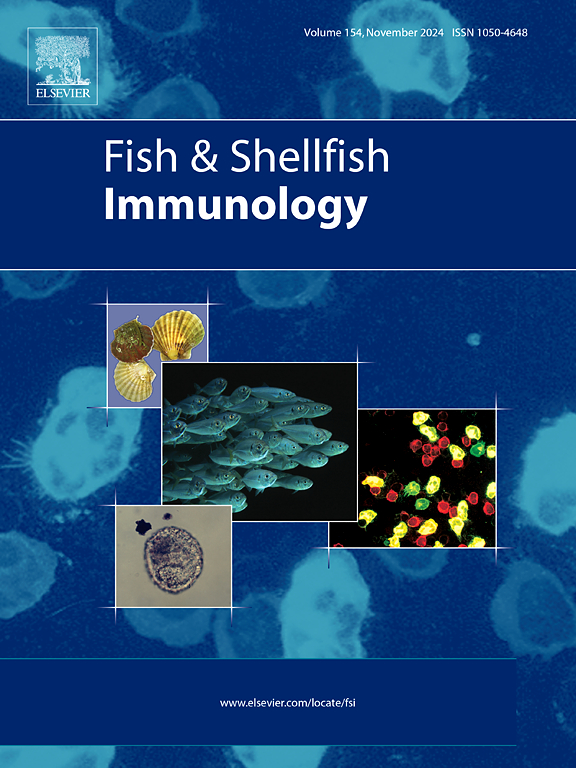Identification of candidate genes associated with AHPND resistance based on genome-wide association study in Pacific white shrimp Litopenaeus vannamei
IF 3.9
2区 农林科学
Q1 FISHERIES
引用次数: 0
Abstract
The Pacific white shrimp Litopenaeus vannamei (L. vannamei) is one of the most important mariculture species. A massive outbreak of acute hepatopancreatic necrosis disease (AHPND) resulted in a huge economic loss to the shrimp aquaculture industry. In this study, a total of 1033 individuals resistant and susceptible to AHPND were genotyped using a custom-designed SNP chip based on target sequencing technology. A total of 54,092 high-quality single-nucleotide polymorphisms (SNPs) were obtained. A genome-wide association study (GWAS) identified 122 SNPs associated with the AHPND resistance traits in shrimp, including 2 genome-wide significant SNPs and 120 chromosome-wide SNPs. These SNPs were distributed across multiple chromosomes and formed a haplotype block on chr27, revealing the polygenic nature of AHPND resistance in L. vannamei. Additionally, 76 candidate genes were identified near these SNPs. Among them, translocon-associated protein subunit alpha (TRAPα) and sphingomyelin phosphodiesterase acid-like 3 (SMPDL3) were confirmed to be associated with this trait. These findings not only offer new insights into the genetic mechanisms underlying AHPND resistance in shrimp but also provide valuable genetic markers for molecular breeding in this species.
基于全基因组关联研究的凡纳滨对虾AHPND抗性候选基因鉴定
凡纳滨对虾(Litopenaeus vannamei, L. vannamei)是最重要的海水养殖品种之一。急性肝胰腺坏死病(AHPND)的大规模爆发给对虾养殖业造成了巨大的经济损失。本研究采用基于靶标测序技术的定制SNP芯片对1033例AHPND耐药和易感个体进行基因分型。共获得54,092个高质量单核苷酸多态性(snp)。一项全基因组关联研究(GWAS)发现了122个与虾AHPND抗性性状相关的snp,包括2个全基因组显著snp和120个全染色体snp。这些snp分布在多条染色体上,在chr27上形成一个单倍型块,揭示了南美扁豆抗AHPND的多基因性。此外,在这些snp附近鉴定了76个候选基因。其中,经证实与该性状相关的有转座子相关蛋白亚单位α (TRAPα)和鞘磷脂磷酸二酯酶样3 (SMPDL3)。这些发现不仅为对虾抗AHPND的遗传机制提供了新的认识,而且为该物种的分子育种提供了有价值的遗传标记。
本文章由计算机程序翻译,如有差异,请以英文原文为准。
求助全文
约1分钟内获得全文
求助全文
来源期刊

Fish & shellfish immunology
农林科学-海洋与淡水生物学
CiteScore
7.50
自引率
19.10%
发文量
750
审稿时长
68 days
期刊介绍:
Fish and Shellfish Immunology rapidly publishes high-quality, peer-refereed contributions in the expanding fields of fish and shellfish immunology. It presents studies on the basic mechanisms of both the specific and non-specific defense systems, the cells, tissues, and humoral factors involved, their dependence on environmental and intrinsic factors, response to pathogens, response to vaccination, and applied studies on the development of specific vaccines for use in the aquaculture industry.
 求助内容:
求助内容: 应助结果提醒方式:
应助结果提醒方式:


